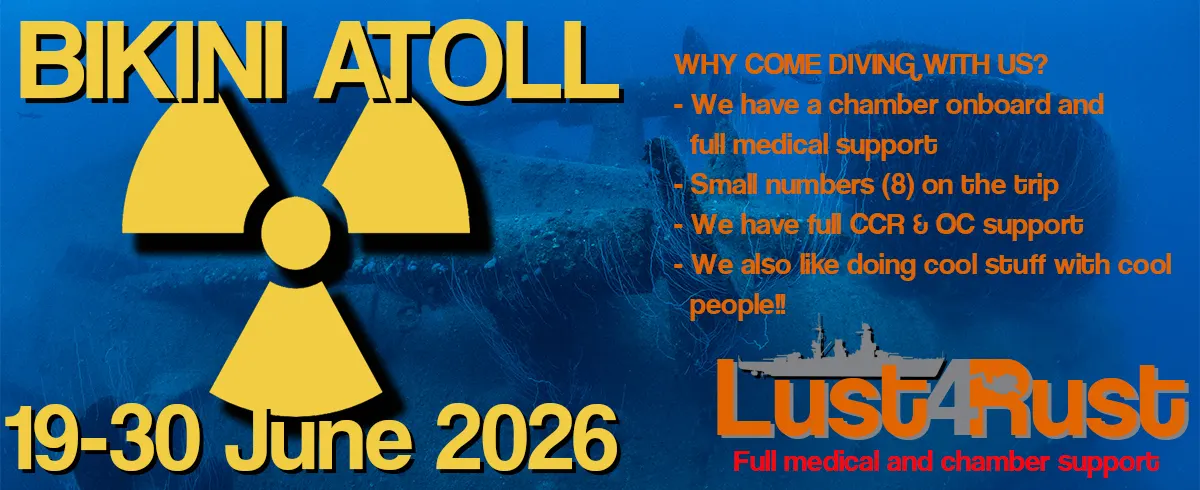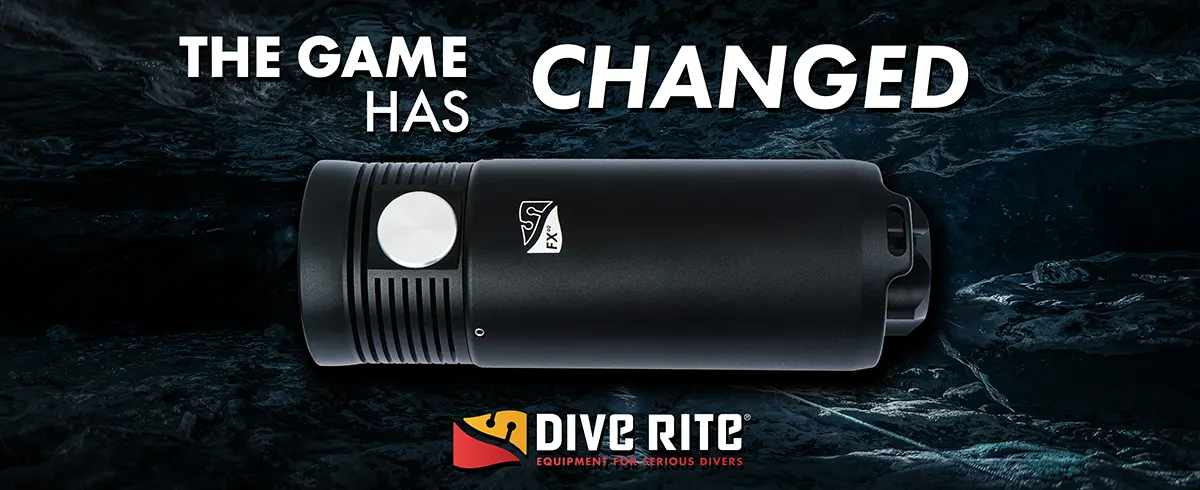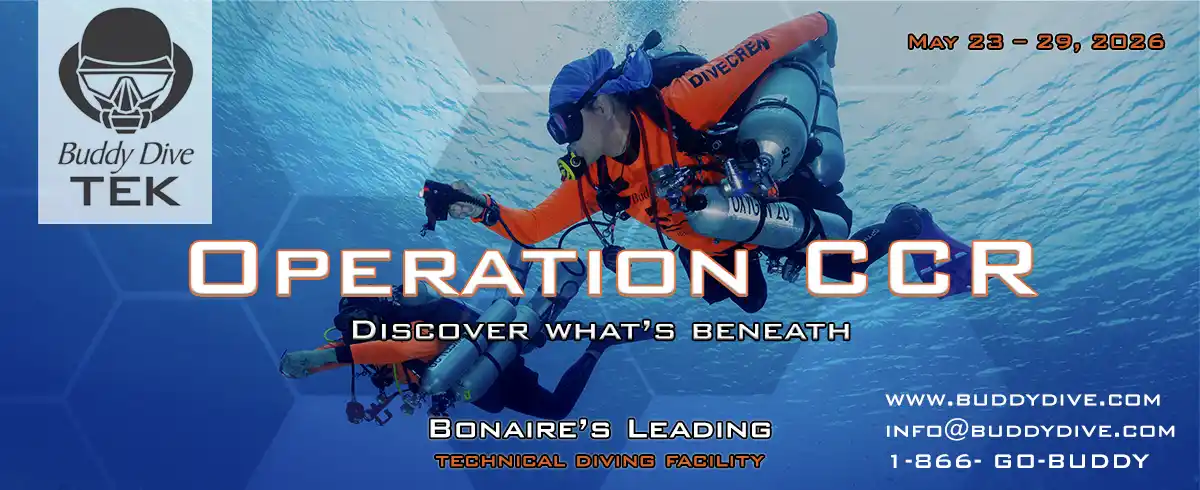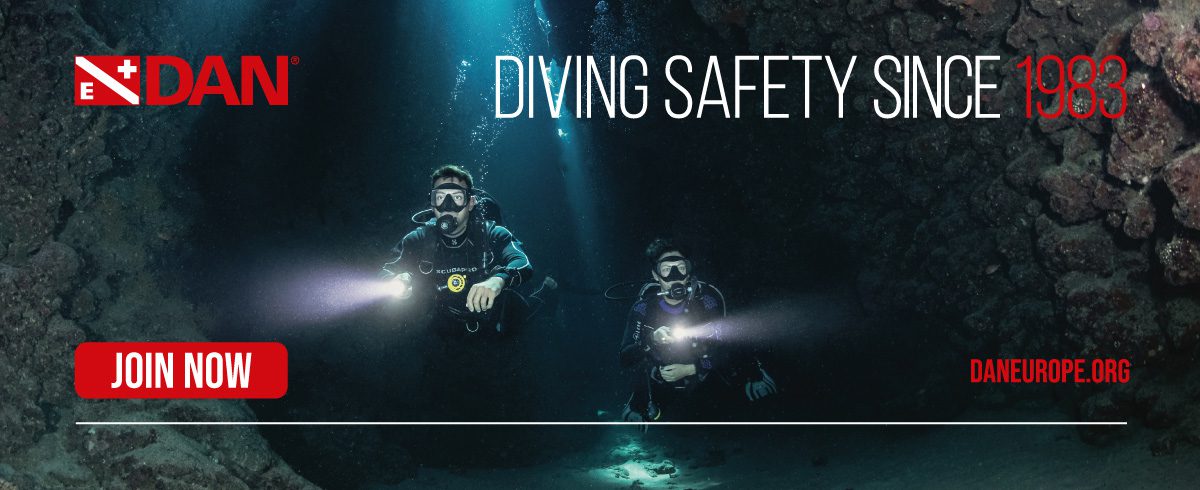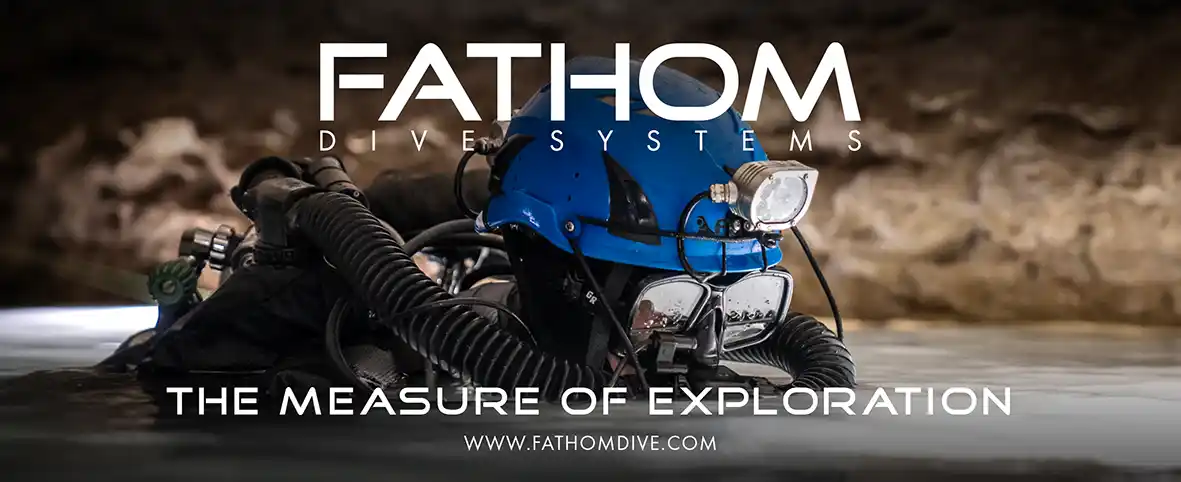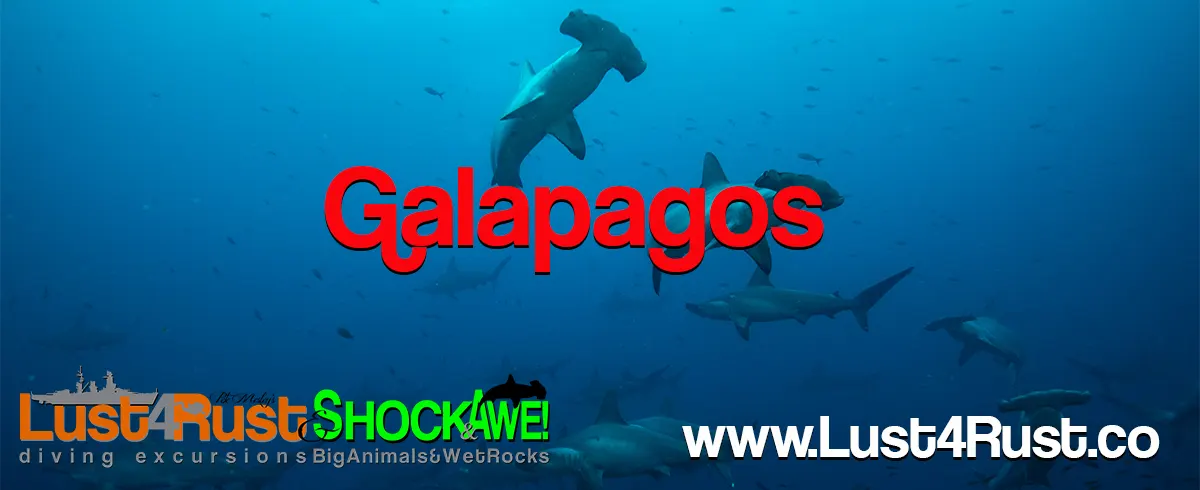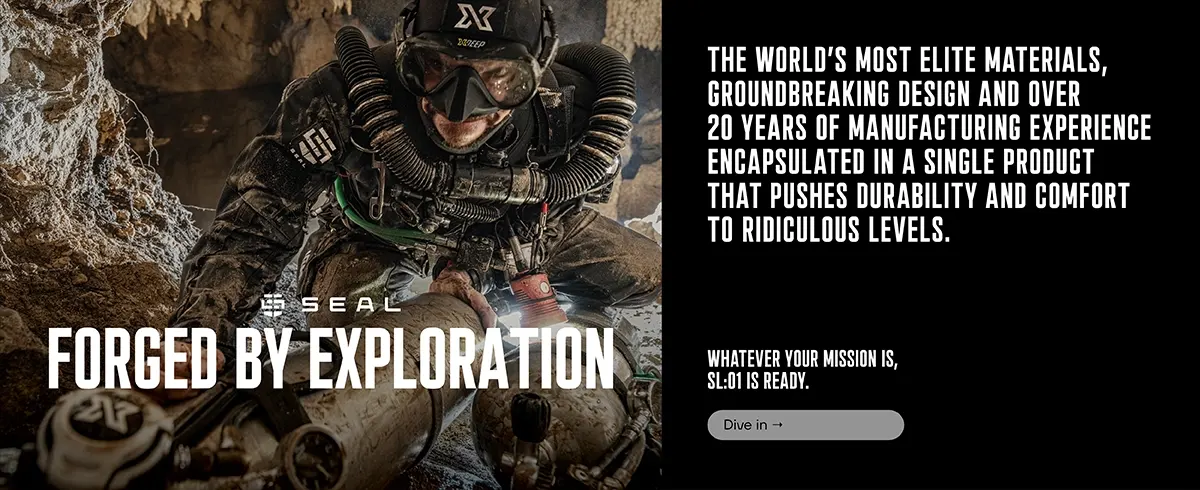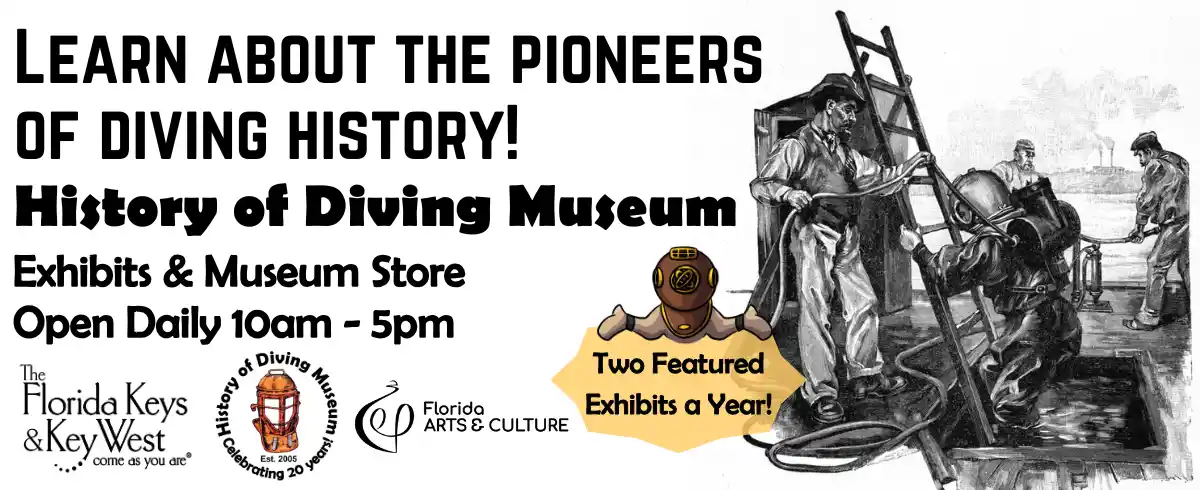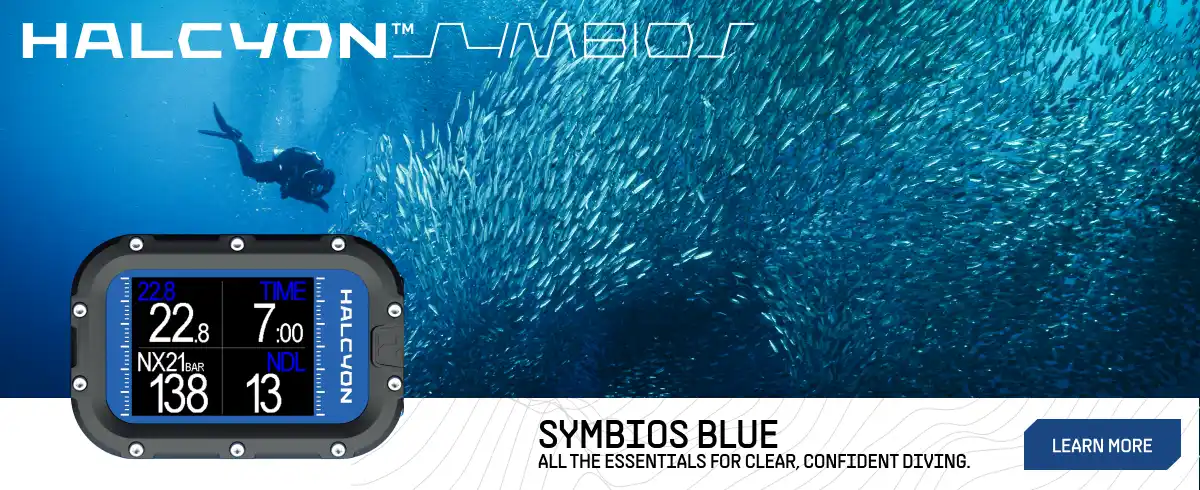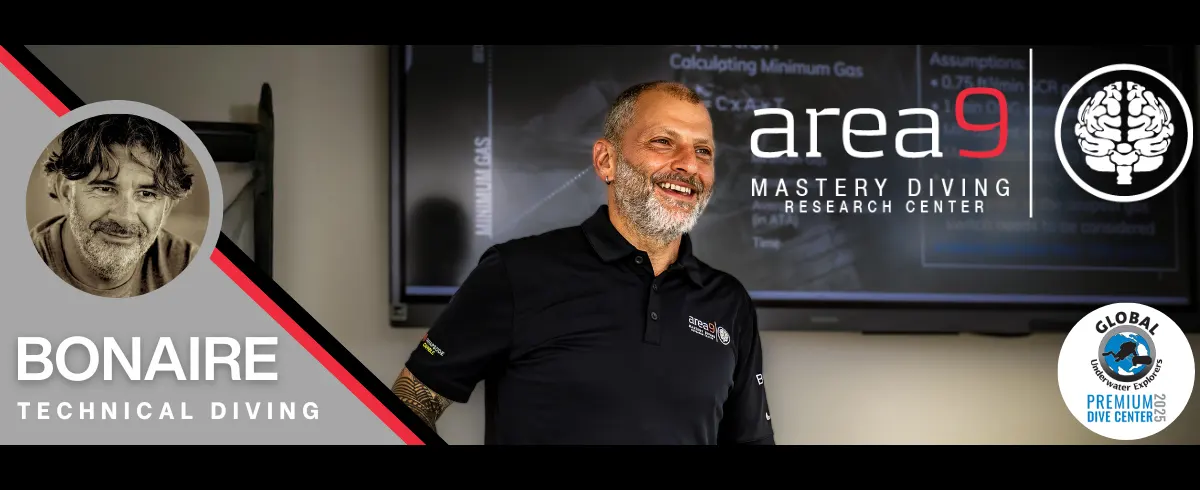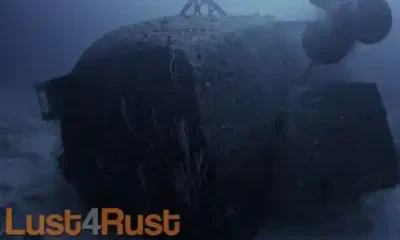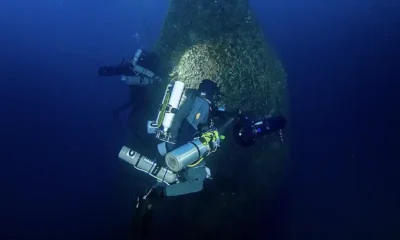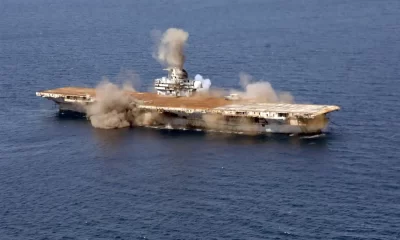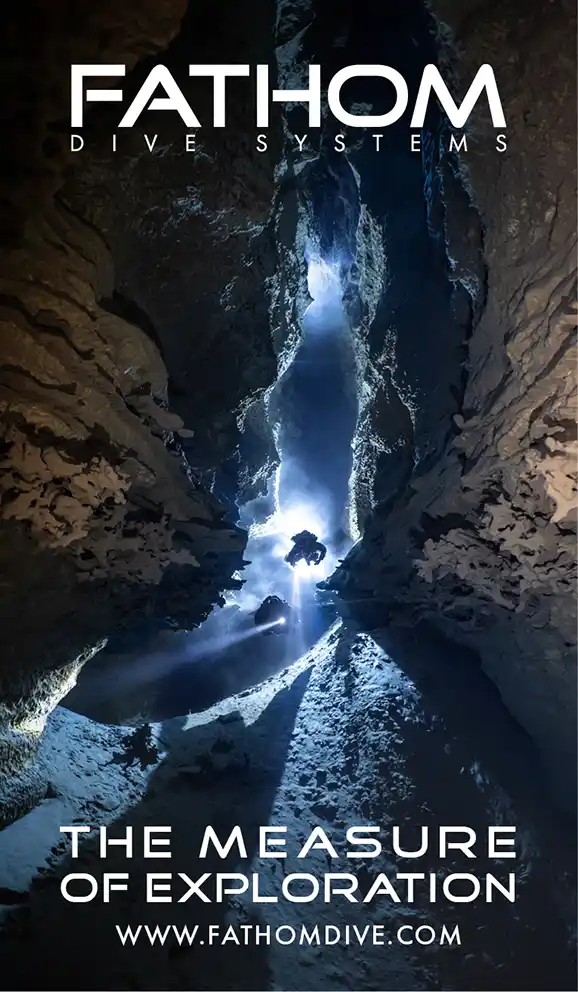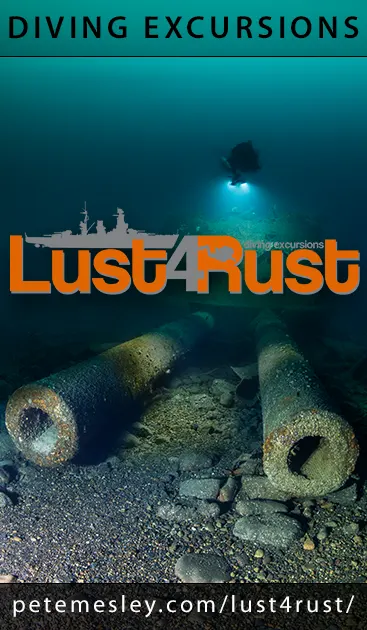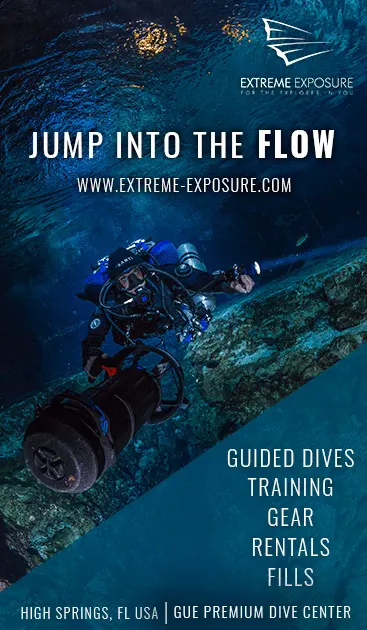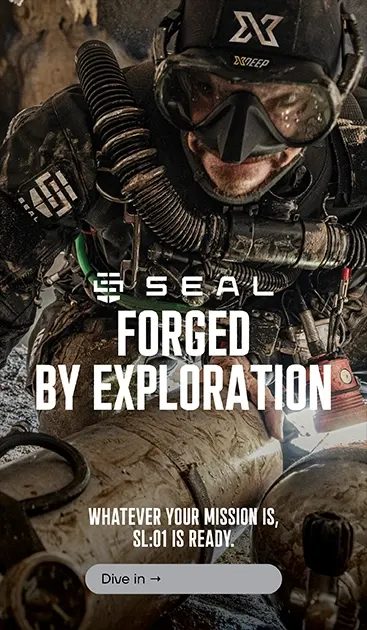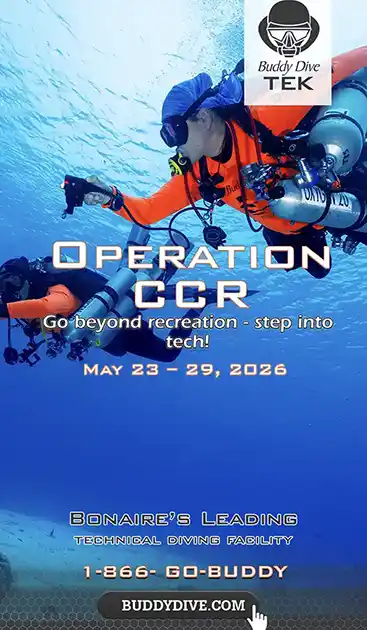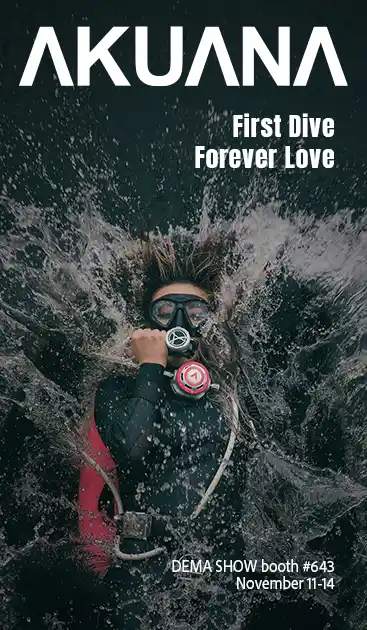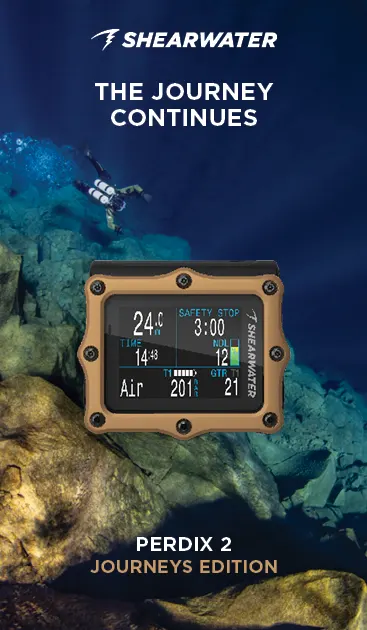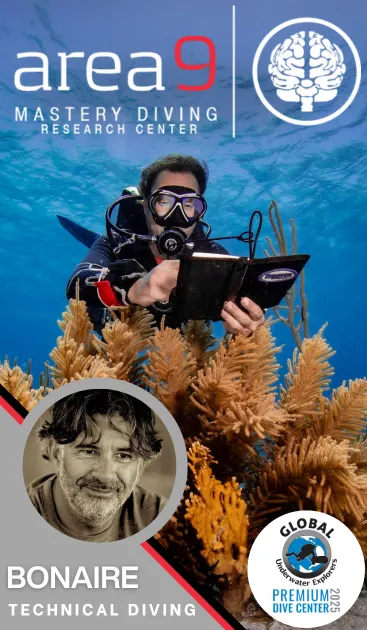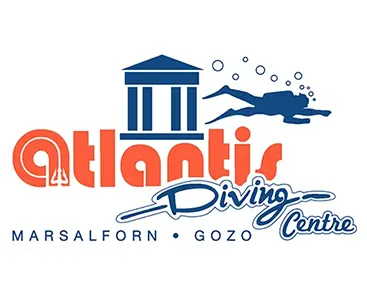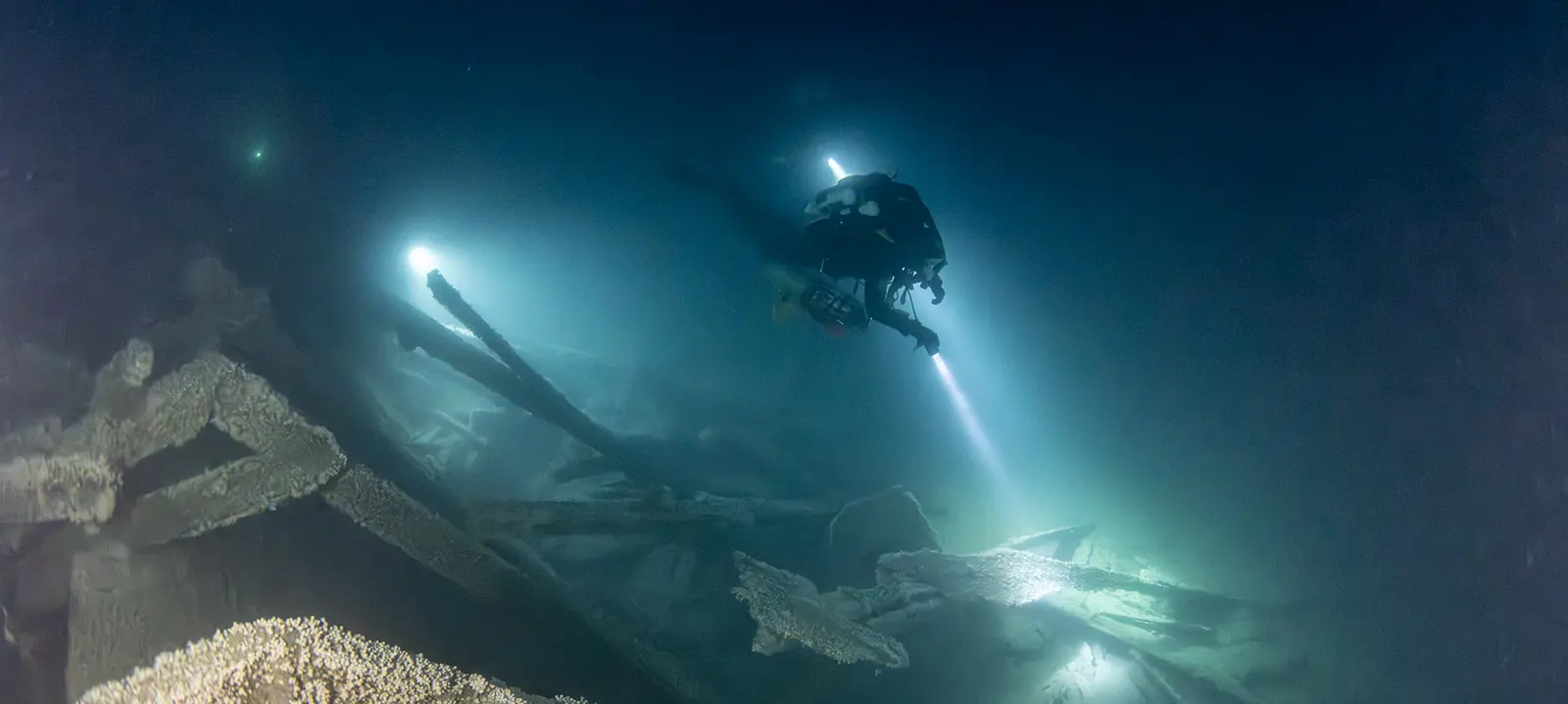
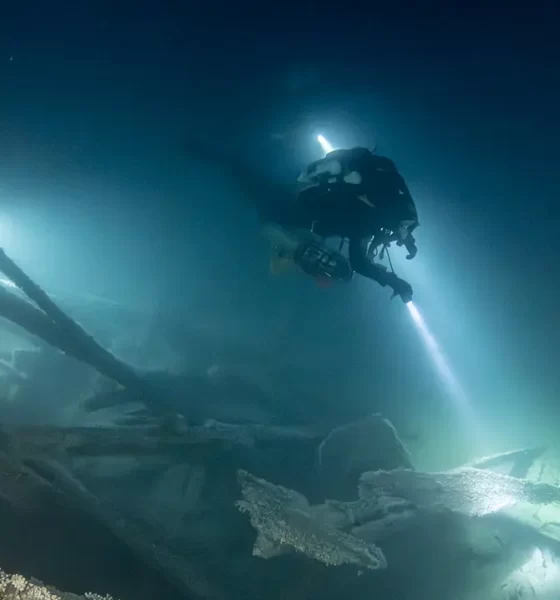
Latest Features
Last of the Liners, the HMS Marmora
Whether it’s the Britannic, Andrea Doria, Lusitania or the Wilhelm Gustloff, ocean liners represent the pinnacle of shipwreck diving, which is why Team Darkstar’s discovery of the HMS Marmosa lying in 120m depths, 70 nm off the coast of Ireland in late 2024, is so important. Shipwreck explorer Dom Robinson reports on their discovery and identification of the liner. Not a bad way to help celebrate the UK’s premier tech diving team’s 25th anniversary!
By Dominic Robinson. Images courtesy of Rick Ayrton. Lead image: 120m deep on the HMS Marmosa. Despite being pitch black, visibility was surprisingly good.
Ocean-going liners remain some of the most magnificent ships ever built. Often used as symbols of national prestige, many were built to an impressive scale and level of opulence, even by modern standards. Many of these stunning vessels are now legendary dives with massive wrecks such as the Britannic, Andrea Doria, Lusitania, and Wilhelm Gustloff featuring heavily on the bucket lists of most technical divers.
Accidents and two World Wars mean that the sea around the British Isles contains a larger number of diveable liners than almost anywhere else in the world. Over the years, almost all of these have been discovered, and the vast majority have been dived, but there remain a small number that have yet to be found. In late 2024, team Darkstar reduced that number further when they discovered HMS Marmora lying 70 nautical miles (nm) from Ireland in 120 m/394 ft of water.
Our Latest Discovery
HMS Marmora was a 168 m/550 ft long, 10,500 GRT liner built in the famous Belfast Harland and Wolff shipyards. Launched in 1903, it served with the Peninsular and Oriental (P&O) Company carrying passengers to Australia and India before being requisitioned by the Admiralty in 1914 as an armed merchant cruiser. Fitted with 8 x 4.7” guns and depth charge launchers, she was escorting a convoy when struck by two torpedoes from UB-64 on July 23, 1918. Within half an hour, it was clear the Marmora could not be saved, and the order to abandon ship was given. Tragically, 10 men lost their lives, almost certainly during the initial explosion.
Darkstar, led by Mark Dixon, are the UK’s premiere technical diving team and recently celebrated their 25th anniversary. During this period, they have pioneered some of the most challenging dives in the British Isles including the Empress of Britain (165 m/541 ft), HMS Transylvania (130 m/427 ft), SS Arabic (115 m/377 ft) and USS Jacob Jones (115 m/377 ft).
Always on the lookout for new targets, the team monitors seabed survey data as it is released by the UK and Irish governments. This provides the key information the team uses to locate wrecks—such as size, shape, and an accurate location. In 2022, Darkstar used this data to be the first divers to reach the SS Missanabie, another 10,000 GRT liner sunk in 1918 now lying at 100 m/328 ft. Reaching it required an epic 200 nm round trip from Newlyn on the South coast of Cornwall, past Lands End, and then most of the way to Ireland.
Having spotted another massive target much further west, the team decided that the only feasible way to reach it was from Ireland. So, in September 2024, the team travelled from across the UK to the chosen operations base near Cork. During the nine-day project, three of us were fortunate enough to travel across in the team’s boat (also called Darkstar) from Plymouth, which provided the opportunity to dive a small unknown mark in 102 m/335 ft at the mid-way point. Unfortunately—despite finding significant quantities of crockery marked as belonging to the Anglo-Greek Steamship Company—it remains unidentified, although our best guess is that it was a vessel known, perhaps fittingly, as The Greek!
The Rough Road to Marmora
With the team in Cork, along with a mountain of kit and everyone raring to go, we were then beset by the traditional difficulty that restricts diving in this part of the world—bad weather. It wasn’t quite bad enough to prevent us going out, but very long offshore transits were not an option. While we prayed for an improvement, we were able to dive some of the local wrecks in the 70-90 m/230-295 ft range. The seabed off of Cork is littered with them, so there were plenty of choices, but unfortunately the visibility was very poor—which may explain why many of them seemed not to have been previously dived! On the plus side, shipping line crockery visible on the seabed allowed us to name several.
Toward the end of our time, the weather began to improve and spirits rose in anticipation of finally reaching our target. At this point, we started to experience a series of problems with the boat which were incredibly frustrating; she needed new batteries, chunks of loom, and even a starter motor. The latter failed on our last diving day but, faced with the prospect of not reaching our primary target, the more technically minded members of the team moved mountains to get it repaired at a local garage and then refitted.
Unfortunately, the delay this created meant that the late slack tide was the only option. This meant that we were faced with both a very long diving day and the awareness that we’d be surfacing at dusk. Being so far offshore was far from ideal, but it was the only option if we were to dive the wreck that had brought us all the way to Ireland!
After such a frantic start to the day, the four-hour and 70-nm journey out was relatively uneventful. Once we got on site, it was fantastic to see the scale of the wreck looming on the sonar. Surface conditions were calm, but there was a palpable air of excitement on the boat as each diver went through their pre-dive process.

I was exceptionally fortunate to be in the first pair to enter the water—although, this also meant that we were responsible for securing the lazy shot to a prusik loop at 45 m/148 ft. Underwater visibility was excellent, although ambient light rapidly reduced as we passed the 100 m/328 ft mark. During the first of two torch failures, one of the video lights attached to my scooter refused to turn on, and then exactly the same thing happened to my primary light as I reached the wreck. Undeterred, I carried on with the single scooter video light, secure in the knowledge that I had a back up in my drysuit pocket should it be required.
From the Irish government multi-beam data, we knew that the wreck was lying on her side—but we didn’t know which side. Having attached my strobes to the lazy shot, the next step was to decide which way to head, and I elected to go right. The wreck was heavily broken up, possibly as a result of being depth charged in WWII, so it proved very difficult to orient myself.
While trying to do this, the prop of my scooter ingested some net causing it to abruptly stop. This was not in the plan, but I was able to clear it quickly and carried on my way until I spotted a massive bronze screw looming out of the darkness!
Cursing myself for using precious bottom time heading toward the stern rather than the bow, I turned round and sped in the other direction. En route, I encountered another diver and signalled him that we’d both made the same mistake. As I made my way forward, I started to identify pieces of wreckage and was stunned to come across the bridge, complete with all the main bridge gear. Lying completely intact on the seabed was a bridge telegraph, and surrounding it were a vast array of other non-ferrous items. Seeing objects like this in British waters is really rare, and knowing that we were the first people to see them since 1918 made it a really special experience.





Unfortunately, I had little time to bask in the experience, since spending too much time on the bottom would require me to surface in the dark. We had a maximum run time of four hours, and my Time To Surface was getting close to that, so it was time to return to the shot. As I headed back, the last video light decided to die, plunging me into total darkness! Fortunately, I was able to make out the strobes at the bottom of the shot, which guided me back.
Deciding to intercept the shot a good 10 m/33 ft above the bottom, I was surprised to find that my pair of strobes were resting on the top of the wreck. Clearly the tide had decreased since I’d put them on the line, and the weight of the rope/strobes had caused them to sink. Not wanting to lose them, I dropped back down to collect—a decision that cost me about 15 extra minutes of decompression!
Finally ascending, I reached my first decompression stop at 66 m/217 ft and, almost bang-on four hours later, was relieved to climb out of the water onto Darkstar. Other members of the team followed soon afterwards, and the last diver surfaced just as the light faded. It had been a close thing, but the sense of elation on board was overwhelming.

Successful Dive, Logistical Nightmare
The question, though, was what had we found? The wreck we had dived was clearly an ocean liner, but what proof did we have that it was HMS Marmora? The similarly sized RMS Hesperian and SS Arabic were also sunk in the same area, so it may have been one of those. Fortunately, the guns and ammunition that we saw on the wreck allowed us to discount both of them, as neither were armed. The final clincher was the P&O items that we saw on the seabed—Marmora was a P&O liner, whereas Hesperian was operated by the Allan line, and Arabic by the White Star Line.
With night closing in, and a boat full of people buzzing from the success of the day, we turned back and started the long journey home. We cracked open a bottle of whiskey and toasted the achievement with a moment of supreme satisfaction. Sadly, our joy didn’t last that long. About half-way back, Mark noticed that the oil pressure was dropping in one of the engines. Lifting the hatch, we were greeted by a horrendous noise along with oil covering almost every surface. It was immediately clear that this needed serious attention before it could be used again.
The good news was that we still had one working engine, which meant we’d be able to safely return to port. The bad news was that our speed was nearly halved. Consequently, the planned return time was pushed back—instead of 2330 hours, it was now 0200. This was always going to be an epic day, but some more mundane considerations were becoming major issues. The most significant was obviously what was going to happen to the boat but, in the shorter term we had an Airbnb that needed to be vacated almost immediately on our return, people had ferries booked, and those of us who travelled on the boat were faced with the realisation that it wasn’t going to be getting us home!
As usually happens, human ingenuity and determination came into play. The moment we returned to port, everyone leapt into action working together to sort out the Airbnb and provide lifts to those without one. The amount of dive kit meant that two of us had to get a lift to Bristol and then return to Ireland in a van to bring everything back. Three ferries and many miles later, we arrived back home just in time to grab a few hours’ kip before going to work. Unfortunately, the boat proved much more challenging to resolve and, a few weeks later, it crossed the Irish Sea to Milford Haven on a single engine. Serious surgery is required for the sick engine which, at the time of writing, is still in hand.
The day brought a mix of extreme emotions, from the high of diving a previously untouched liner to the shock of Darkstar’s engine failure. If that isn’t a great illustration of how diving can give with one hand and take away with another then I don’t know what is!
DIVE DEEPER
CNN: Maritime mystery solved after shipwreck discovered off UK coast
InDEPTH: The BSAC: A Broad Church With Wreck Webinars. Amen

Dominic Robinson is a former Army officer and military helicopter pilot. A passionate exploratory technical diver, he has been a member of the teams that have recently identified such notable wrecks as HMS Jason (95 m/312 ft), RMS Missanabie (98 m/322 ft), USS Jacob Jones (115 m/377 ft), HMS Negro (100 m/328 ft), and HMS Marmora (118 m/387 ft). Many of these divers feature on his YouTube channel, Deep Wreck Diver. You can also find him on Facebook at: Deep Wreck Diver.

